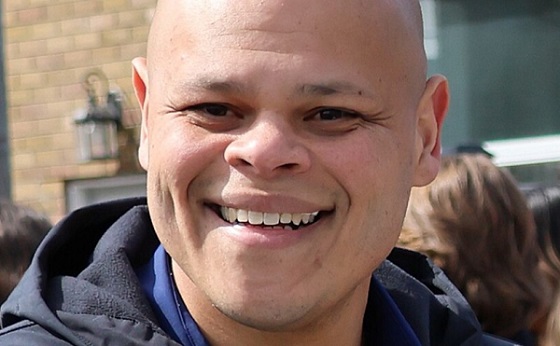Frontier Centre for Public Policy
Christmas: As Canadian as Hockey and Maple Syrup

From the Frontier Centre for Public Policy
By Gerry Bowler
Well, they’re at it again. A year after a Canadian Human Rights Commission position paper labeled Christmas “discriminatory” and an example of “colonialist religious intolerance”, an Alberta public school has cancelled a winter concert because marking Christmas isn’t inclusive enough. The principal of Whitecourt’s Pat Hardy Elementary stated, “Not all students celebrate Christmas, and their families may or may not choose to have them participate in the Christmas concert. Other families celebrate Christmas as a religious holiday but do not want children engaging in the non-religious parts such as Santa, Christmas trees, etc.” It was suggested that a spring concert might be more inclusive, presumably on the theory that no one gets too worked up about the vernal equinox.
The principal’s actions are scarcely news; for years schools and public officials have been reluctant to stage any activity around the celebration of the Nativity. “Christmas concerts” have been relabelled or cancelled; “Christmas trees” have been termed the “Holiday Tree.” Or a “Care Tree.” A “Multicultural Tree.” A “Tree of Lights.” A “Community Tree.” A “Winter Solstice Tree.” A “Grand Tree.” A “Special Tree.” A “Family Tree.” The “Annual Tree.” A “Festive Bush.” A “Unity Tree.” A “Culture Tree.” Activists in Saskatoon objected to city buses displaying a “Merry Christmas” wish; a Toronto judge ordered a Christmas tree removed from the courthouse lest it makes non-Christians feel unwelcome; inspired by the American school that mandated that the lyrics to “Silent Night” be changed to “Silent Night, mmm, mmm, mmm, / All is calm, all is bright, mmm, mmm, mmm”, a principal at an Ottawa school excised the C-word from the ditty “Silver Bells”. Thus: “Ring-a-ling, hear them sing; Soon it will be a festive day.”
There are several ways of dealing with this perennial issue. One is to remove religion from the public square altogether – that would certainly suit the secular fundamentalists – another is to play the majoritarian card and insist that since Christians outnumber other faith communities their will should hold sway. Some might want to dilute any mention of Christianity from the season while others might wish to include every other religion’s holy days on the school calendar.
I have a solution to this seasonal dilemma. It is to adopt the attitude taken by leaders of racial and religious minorities in Canada when asked if they are offended by mentions of Christmas. Their invariable answer is, of course not, Christmas is an integral part of Canadian culture.
Christmas is indeed Canadian, as native to our land as Hockey Night in Canada, Stompin’ Tom Connors, or pineapple on pizza. It has been Canadian longer than poutine, mediocre socialized healthcare, or the last time Toronto won the Stanley Cup. The Vikings who found a home in Newfoundland a thousand years ago likely celebrated Christmas, and there’s no doubt that the holiday has been observed for half a millennium by later European settlers.
Though a current American politician may regard Canada as the 51st state and a current Canadian politician may opine that we are a post-national entity with no core identity, Canada, over the centuries, has developed a unique Christmas culture. We have beautiful carols of our own – “D’où Viens-Tu Bergère?”, the “Huron Carol” (“Jesus Ahatonia”), the first ever written in a North American indigenous language, and J.P. Clarke’s 1853 “A Canadian Christmas Carol”– not to mention secular seasonal music such as “Voici Le Père Noël Qui Nous Arrive” by the legendary Mary Bolduc, the melancholy “River” by Joni Mitchell, Bob and Doug Mackenzie’s take on “The Twelve Days of Christmas” and the immortal “Honky the Christmas Goose,” as sung by Johnny Bower (the last Leaf goalie to win a Stanley Cup).
We have unique Christmas foods – the taffy pull on St Catherine’s day, the tourtière of the revéillon, rapee pie, cipâte, butter tarts, Nanaimo bars, ragoût de pattes, “chicken bones,” and “barley toys.”
Though Santa Claus has his own Canadian postal code (H0H 0H0), we do not count him as a citizen, but we do have our own native Gift-Bringer in the form of Mother Goody (also known as Aunt Nancy or Mother New Year).
Canada can boast the first Christmas tree in North America, the custom introduced by Baroness Frederika von Riedesel whose husband Baron Friedrich Adolphus von Riedesel had brought 4,000 German Brunswicker soldiers in 1776 to protect Canada from American invasion. The first department store Santa was employed in Fredericton, New Brunswick, in 1869. Our post office issued the world’s first Christmas stamp in 1898. Eaton’s department store in Toronto staged the first Santa Claus parade in 1905.
Only in Canada can we see mummers of all sorts at Christmas – Janneys, Ownshooks, Fools, Belsnicklers, and Naluyuks; only in Canada do door to-door canvassers under the guise of “la guignolée” solicit donations to charity while singing a song threatening to torture the oldest daughter of the house.
So the next time objections are raised to the appearance of Christmas in the public square, simply state that it’s a long-standing Canadian custom, sanctified by time and universal practice, as deeply embedded in our culture as the red maple leaf. It’s what we do. Canadians do Christmas.
Gerry Bowler, historian, is a Senior Fellow at the Frontier Centre for Public Policy
Business
Canada Can Finally Profit From LNG If Ottawa Stops Dragging Its Feet

From the Frontier Centre for Public Policy
By Ian Madsen
Canada’s growing LNG exports are opening global markets and reducing dependence on U.S. prices, if Ottawa allows the pipelines and export facilities needed to reach those markets
Canada’s LNG advantage is clear, but federal bottlenecks still risk turning a rare opening into another missed opportunity
Canada is finally in a position to profit from global LNG demand. But that opportunity will slip away unless Ottawa supports the pipelines and export capacity needed to reach those markets.
Most major LNG and pipeline projects still need federal impact assessments and approvals, which means Ottawa can delay or block them even when provincial and Indigenous governments are onside. Several major projects are already moving ahead, which makes Ottawa’s role even more important.
The Ksi Lisims floating liquefaction and export facility near Prince Rupert, British Columbia, along with the LNG Canada terminal at Kitimat, B.C., Cedar LNG and a likely expansion of LNG Canada, are all increasing Canada’s export capacity. For the first time, Canada will be able to sell natural gas to overseas buyers instead of relying solely on the U.S. market and its lower prices.
These projects give the northeast B.C. and northwest Alberta Montney region a long-needed outlet for its natural gas. Horizontal drilling and hydraulic fracturing made it possible to tap these reserves at scale. Until 2025, producers had no choice but to sell into the saturated U.S. market at whatever price American buyers offered. Gaining access to world markets marks one of the most significant changes for an industry long tied to U.S. pricing.
According to an International Gas Union report, “Global liquefied natural gas (LNG) trade grew by 2.4 per cent in 2024 to 411.24 million tonnes, connecting 22 exporting markets with 48 importing markets.” LNG still represents a small share of global natural gas production, but it opens the door to buyers willing to pay more than U.S. markets.
LNG Canada is expected to export a meaningful share of Canada’s natural gas when fully operational. Statistics Canada reports that Canada already contributes to global LNG exports, and that contribution is poised to rise as new facilities come online.
Higher returns have encouraged more development in the Montney region, which produces more than half of Canada’s natural gas. A growing share now goes directly to LNG Canada.
Canadian LNG projects have lower estimated break-even costs than several U.S. or Mexican facilities. That gives Canada a cost advantage in Asia, where LNG demand continues to grow.
Asian LNG prices are higher because major buyers such as Japan and South Korea lack domestic natural gas and rely heavily on imports tied to global price benchmarks. In June 2025, LNG in East Asia sold well above Canadian break-even levels. This price difference, combined with Canada’s competitive costs, gives exporters strong margins compared with sales into North American markets.
The International Energy Agency expects global LNG exports to rise significantly by 2030 as Europe replaces Russian pipeline gas and Asian economies increase their LNG use. Canada is entering the global market at the right time, which strengthens the case for expanding LNG capacity.
As Canadian and U.S. LNG exports grow, North American supply will tighten and local prices will rise. Higher domestic prices will raise revenues and shrink the discount that drains billions from Canada’s economy.
Canada loses more than $20 billion a year because of an estimated $20-per-barrel discount on oil and about $2 per gigajoule on natural gas, according to the Frontier Centre for Public Policy’s energy discount tracker. Those losses appear directly in public budgets. Higher natural gas revenues help fund provincial services, health care, infrastructure and Indigenous revenue-sharing agreements that rely on resource income.
Canada is already seeing early gains from selling more natural gas into global markets. Government support for more pipelines and LNG export capacity would build on those gains and lift GDP and incomes. Ottawa’s job is straightforward. Let the industry reach the markets willing to pay.
Ian Madsen is a senior policy analyst at the Frontier Centre for Public Policy.
Automotive
Canada’s EV Mandate Is Running On Empty

From the Frontier Centre for Public Policy
At what point does Ottawa admit its EV plan isn’t working?
Electric vehicles produce more pollution than the gas-powered cars they’re replacing.
This revelation, emerging from life-cycle and supply chain audits, exposes the false claim behind Ottawa’s more than $50 billion experiment. A Volvo study found that manufacturing an EV generates 70 per cent more emissions than building a comparable conventional vehicle because battery production is energy-intensive and often powered by coal in countries such as China. Depending on the electricity grid, it can take years or never for an EV to offset that initial carbon debt.
Prime Minister Mark Carney paused the federal electric vehicle (EV) mandate for 2026 due to public pressure and corporate failures while keeping the 2030 and 2035 targets. The mandate requires 20 per cent of new vehicles sold in 2026 to be zero-emission, rising to 60 per cent in 2030 and 100 per cent in 2035. Carney inherited this policy crisis but is reluctant to abandon it.
Industry failures and Trump tariffs forced Ottawa’s hand. Northvolt received $240 million in federal subsidies for a Quebec battery plant before filing for bankruptcy. Lion Electric burned through $100 million before announcing layoffs. Arrival, a U.K.-based electric van and bus manufacturer, collapsed entirely. Stellantis and LG Energy Solution extracted $15 billion for Windsor. Volkswagen secured $13 billion for St. Thomas.
The federal government committed more than $50 billion in subsidies and tax credits to prop up Canada’s EV industry. Ottawa defended these payouts as necessary to match the U.S. Inflation Reduction Act, which offers major incentives for EV and battery manufacturing. That is twice Manitoba’s annual operating budget. Every Manitoban could have had a two-year tax holiday with the public money Ottawa wasted on EVs.
Even with incentives, EVs reached only 15 per cent of new vehicle sales in 2024, far short of the mandated levels for 2026 and 2030. When federal subsidies ended in January 2025, sales collapsed to nine per cent, revealing the true level of consumer demand. Dealer lots overflowed with unsold inventory. EV sales also slowed in the U.S. and Europe in 2024, showing that cooling demand is a broader trend.
As economist Friedrich Hayek observed, “The curious task of economics is to demonstrate to men how little they really know about what they imagine they can design.” Politicians and bureaucrats cannot know what millions of Canadians know about their own needs. When federal ministers mandate which vehicles Canadians must buy and which companies deserve billions, they substitute the judgment of a few hundred officials for the collective wisdom of an entire market.
Bureaucrats draft regulations that determine the vehicles Canadians must purchase years from now, as if they can predict technology and consumer preferences better than markets.
Green ideology provided perfect cover. Invoke a climate emergency and fiscal responsibility vanishes. Question more than $50 billion in subsidies and you are labelled a climate denier. Point out the environmental costs of battery production, and you are accused of spreading misinformation.
History repeatedly teaches that central planning always fails. Soviet five-year plans, Venezuela’s resource nationalization and Britain’s industrial policy failures all show the same pattern. Every attempt to run economies from political offices ends in misallocation, waste and outcomes opposite to those promised. Concentrated political power cannot ever match the intelligence of free markets responding to real prices and constraints.
Markets collect information that no central planner can access. Prices signal scarcity and value. Profits and losses reward accuracy and punish error. When governments override these mechanisms with mandates and subsidies, they impair the information system that enables rational economic decisions.
The EV mandate forced a technological shift and failed. Billions in subsidies went to failing companies. Taxpayers absorbed losses while corporations walked away. Workers lost their jobs.
Canada needs a full repeal of the EV mandate and a retreat from PMO planners directing market decisions. The law must be struck, not paused. The contrived 2030 and 2035 targets must be abandoned.
Markets, not cabinet ministers, must determine what technologies Canadians choose.
Marco Navarro-Genie is vice-president of research at the Frontier Centre for Public Policy and co-author, with Barry Cooper, of Canada’s COVID: The Story of a Pandemic Moral Panic (2023).
-

 Business1 day ago
Business1 day agoThe EU Insists Its X Fine Isn’t About Censorship. Here’s Why It Is.
-

 Focal Points2 days ago
Focal Points2 days agoCommon Vaccines Linked to 38-50% Increased Risk of Dementia and Alzheimer’s
-

 National8 hours ago
National8 hours agoLiberal bill “targets Christians” by removing religious exemption in hate-speech law
-

 Business1 day ago
Business1 day agoCanada invests $34 million in Chinese drones now considered to be ‘high security risks’
-

 Health1 day ago
Health1 day agoCDC Vaccine Panel Votes to End Universal Hep B Vaccine for Newborns
-

 Economy1 day ago
Economy1 day agoAffordable housing out of reach everywhere in Canada
-

 Bruce Dowbiggin1 day ago
Bruce Dowbiggin1 day agoWayne Gretzky’s Terrible, Awful Week.. And Soccer/ Football.
-

 Business17 hours ago
Business17 hours agoThe Climate-Risk Industrial Complex and the Manufactured Insurance Crisis




